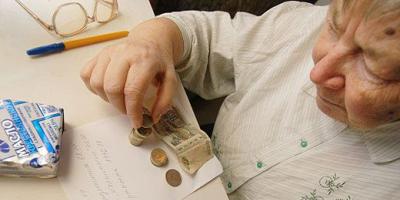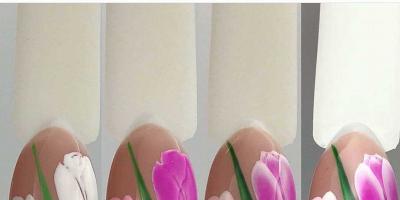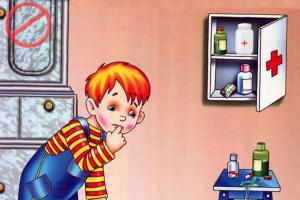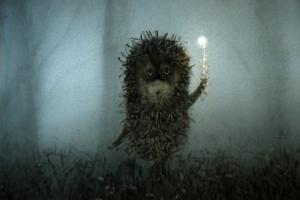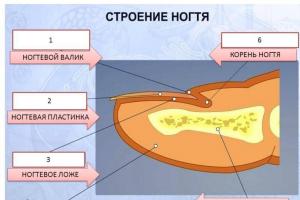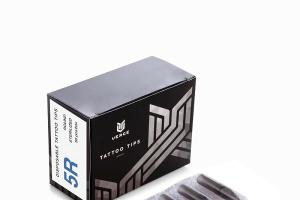Municipal state preschool educational institution
Izhmorsky kindergarten No. 2
Abstract
Compiled by: Surnina T.V.
Teacher of the 1st qualification category of the MKDOU Izhmorsky kindergarten No. 2.
Urban settlement Izhmorsky 2018
Agreed: Approved:
Senior teacher Head of MKDOU
MKDOU Izhmorskiy d/s No. 2 Izhmorskiy d/s No. 2
Poltoratskaya L.P._______ Cheren Ya.V._________
Abstract
Organized educational activities in the 2nd junior group
TOPIC: “Safety rules at home and on the street.”
Target: Help children remember objects and situations that are dangerous to life and health. Remember the rules of behavior on the road. Draw your own conclusions about the consequences of careless behavior and handling of dangerous objects.
Tasks:
Educational:
Introduce children to objects and situations that are dangerous to the life and health of people they encounter in life.
Establish rules for safe behavior at home and on the road.
Educational:
Stimulate curiosity.
Promote the development of all components of oral speech.
Develop memory, logical thinking, imagination, and the ability to draw conclusions.
Educational:
Foster accuracy and independence in the use of various materials and objects.
Cultivate a cautious and prudent attitude towards potentially dangerous situations.
Foster the need for daily compliance with safety rules, the ability to sympathize and help.
Types of children's activities: gaming, communicative, cognitive-research, motor.
Preliminary work:
Conversation “Dangerous objects in everyday life”, solving riddles about dangerous objects, watching the presentation “Dangerous objects in the house”, conducting a didactic game “One, two, three, name what can be dangerous”
Independent activities: viewing and coloring illustrations and pictures on the theme “Dangerous, non-dangerous.”
Equipment and facilities : pictures with the image “Dangerous is not dangerous”, album sheets, pencils.
Progress of the lesson:
1. Introductory part.
Educator:
Hello guys! Let's get a look. Who came to visit us today? Let's say hello and smile. Let's create a good mood for ourselves.
All the children gathered in a circle.
I am your friend and you are my friend.
Let's hold hands tightly
And let's smile at each other
I'll look at your faces
Who should I make friends with here?
Tell me what is your name? (Anya, Maxim, Sonya).
2. Main part.
Today we will talk about the rules of behavior at home and on the road.
Educator: Today we have an unusual lesson, we will talk about what you should be wary of when you are left alone at home and we will try to come up with and remember rules that will helpwe need to protect ourselves from misfortune (children sit down).
Educator: Children, if you are alone at home and hear someone knocking on the door? What do we do? Can you open the door if you are home alone? (children's answer) Why can't you? What can happen? (answers - children's stories)
Educator: 1 rule: Never open the door to strangers! Only adults can do this, and only after they definitely ask: “Who’s there”?
Educator: Rule 2: How should we behave on the road? How should we cross the road? (children's answers)
And now we will play a little!
The d/game “Dangerous is not dangerous” is played.
Children take cards depicting the rules of behavior on the road, the correct answer is in green, and the wrong answer is in red.
Educator: Thanks guys for your help! What a great fellow you are. Now we know exactly what we can play with and what we can’t play with., where you can play ball. And where not.
Physical education minute:
Children driving a car (walking in pairs, holding the shoulders of the person in front)
Looking at the road
Left the guard is standing (torso turns left and right)
The traffic light on the right is on.
Educator: I have pictures, let's sort them out. You tell me what can and cannot be done.
Rule one: " You can’t touch or plug in electrical appliances, you can’t turn on the gas stove.”

Rule two: “You cannot take medicine and taste it.”

Rule three: « You can’t play in the bathroom and leave the tap open.”
Let's play the game: "Yes or no."
Listen carefully. When I tell you: “Children can...”, you must think and answer: if you can and are allowed to do it yourself in the absence of your parents, say “yes” along with clapping your hands. If you are not allowed to do this in the absence of your parents, answer “no” and stomp your feet.
Educator: Children can...
play with matches and lighter;
paint;
turn the washing machine on and off;
Play with dolls;
turn on the stove;
put food in the microwave to heat it up;
turn on the electric kettle;
look at pictures in books;
use a knife;
to watch cartoons;
drag the TV plugged into the socket by the cord;
turn on and use the iron;
turn on the hair dryer and dry your hair;
insert foreign objects into the socket;
open different cans, jars, packages;
collect puzzles, build a house from cubes.
Educator: Well done guys! Now let's remember the rules of behavior on the road! What is the most important sign you know? (traffic light). Is it possible to play ball on the roadway? (children's answers). How should you cross the road? (children's answers).
Final part: Guys, let’s draw a traffic light and color it.
Exhibition of children's works.



System of work in the second junior group “Dangerous situations”
Moiseeva Natalya Valentinovna, teacher of Gymnasium No. 1503 in Moscow (SP DO 1964)
Having attended a performance with the whole group on the topic “Fire Safety,” the children showed interest in the presence or absence of dangerous situations in everyday life, as evidenced by numerous questions on this topic.
Problem: not all children are ready for a safe life in the environment - natural, social, as they have insufficient experience of behavior in difficult situations.
Way to solve the problem: ensure the safety of preschoolers by involving them in joint activities on this topic.
Description: This system of work is the basis of the project on the topic “Safety”. The material will be of interest to teachers and parents of preschool children. This system of work is designed for children 3-4 years old.
Target: Formation of the foundations of safe behavior in everyday life, society, and nature.
Tasks: Discuss typical dangerous situations of possible contacts with strangers, learn how to behave correctly in such situations.
Learn the rules of safe behavior on city streets.
Learn to find a way out of dangerous situations with fire.
Develop a cautious and prudent attitude towards situations that are potentially dangerous for the child.
Predicted results: Children show interest in the rules of health-preserving and safe behavior. The guys strive to follow the basic rules of a safe lifestyle. Children will easily find the only correct solution in a dangerous situation. If the child knows about possible dangerous situations from an early age, many dangers can be avoided.
Duration of work: one month.
Sequence of work
A thematic corner is being organized on the topics “Safe Communication”, “Fire Safety”, “Safety on City Streets”.


Stage 1: preparatory
Literature for reading with children is selected: “Fire”, “Smoke” by Boris Zhidkov; “Home safety lessons” for kids Sergey Mikhalkov; “What is good and what is bad” V.V. Mayakovsky and others.
We draw up a work plan:
First week Dangerous contacts with strangers, dangerous situations at home.
Second week Fire safety rules.
Third week Dangerous situations on the street and on the road.
Fourth week Reinforcing the topics covered.
Stage 2: main
First weekReading fiction, looking at illustrations, talking about what you read.
The appearance of the fairy-tale character Mouse, who asks children how to behave when meeting strangers: the mouse invites children to solve some dangerous situations, for example, what to do if strangers ring the doorbell, what to do if you are lost (lagged behind mom and dad) , what to do if the window is open and there are no adults nearby.
Fizminutka
One day the mice came out to see what time it was. (walking in place, then looking through binoculars from your hands)
One, two, three, four (clapping hands overhead)
The mice pulled the weights (we “pull” the weights up and down)
Suddenly, there was a strong ringing (clap in front of you)
The mice ran away (running in place).
Assignment for parents and children to make a craft on the topic “Communication with strangers.”
A mouse listens to the fairy tale “Masha and the Bear” with the children.
Fizminutka
The bear crawled out of the den and looked around on the threshold (turns left, right).
He stretched from sleep (stretching).
The bear turned his head (turns his head)
Leaned back and forth (bending).
Here he is walking through the forest. The bear is looking for honey and raspberries (bend over, touch the floor with our hands).
Finally, the bear had eaten and sat down on a log (the children sit down).
When talking with parents about doing homework, we encountered a problem: some parents are afraid to talk with their children on the topic “Safe communication with strangers” because they had a bad experience with their previous child.
A conversation was held with the mother, methods of working with children on this topic were shown, and examples of the teacher’s work were given. Mom was invited to the “Safety Lessons” lesson.
A meeting was organized between a teacher-psychologist and parents on the topic “Preventing dangerous situations and teaching children the ability to assess situations dangerous to life and health.”
Psychological support acts as a complex technology, a special culture of support and assistance in solving development problems and educating the socialization of the child.
Game "Good and bad"
The teacher names the actions, and the children answer what is good and what is bad.
Parent meeting on the topic “Styles of family education.”
Exhibition of works (joint parents and children).
Lesson with children on the topic “Rules of behavior on the landing.”

Second week
A Mouse comes to visit the children and brings his friend, whose hem of his trousers is scorched by fire.
The children are shown the scene “A Mouse Plays with Matches.”
Puppet theater "Buratino"

Artistic creativity: drawing on the theme “Matches are not a toy for children” (children are invited to decorate the fire and matches).
Exhibition of finished works.
In conversations with parents, we learned that the children learned this topic very well; many used the words in their active vocabulary: fire, match, fire, fireman, smoke).
Homework for parents and children: watch and discuss a cartoon on fire safety.
Conversation with children on the topic of watched cartoons.
Game “The doll is preparing dinner”(discussion of rules of conduct in the kitchen. We give children the concept of good and evil FIRE.
Reading fiction(taken from the Internet, author unknown)
It's always different
Amazing fire
Sometimes an ugly brawler, sometimes a quiet one.
Yes, there are different types of fire -
Pale yellow, bright red,
Blue or gold.
Very kind, very evil.
Guessing riddles
He is beautiful and bright red, but he is burning, hot, dangerous. (fire)
He makes noise and gets angry and is afraid of water. (fire)
A small horse with a light instead of a mane. (matches)
Lesson with children on the topic “Safe behavior at the table.”
Third week
Virtual tour of the city streets.
Conversation“All kids need to know how to walk the streets.”
Reading “My Street”, “Uncle Styopa” Mikhalkov
Outdoor game"Colored Cars", "Sparrows and Cars"
Artistic creativity: application “Colored cars”
Artistic creativity: drawing “Traffic light”
Role-playing game"Pedestrians on the Road"

Objectives: introduce children to the basic rules of behavior on the street, reinforce the ability to start moving in accordance with the color of the traffic light, and the meaning of the traffic light.
Theatrical game"The wolf and the seven Young goats"
Joint creativity: we make a model of the road.


Fourth week
Outdoor game"Stomp, clap"
Objectives: to consolidate knowledge about life safety, to promote the development of reaction speed and dexterity.
Children stand in a circle. The teacher either reads a poem or lists some actions. If the spoken action can be performed, the children clap, if not, they stomp.
Guessing riddles
Conversation “I know what is possible and what is not”
Reading“Fire” S. Mikhalkov
Entertainment “We are firefighters”
Target: formation of elementary ideas about the rules fire safety.
Tasks:
Educational: introduce children to the causes of fire, its consequences, make children want to be careful with fire.
Developmental: develop children’s thinking, attention, continue to develop children’s coherent speech, and the ability to answer the teacher’s questions.
Educational: to educate children to take responsibility for themselves, their loved ones and their own safety; friendly attitude towards each other.
Equipment: toy- cat, boxes of matches, pictures of electrical appliances, modules (cubes) for building a house for Cats, telephone.
Preliminary work: conversation with children on the topic “Matches are not a toy for children”, looking at illustrations fire hazardous situations, reading nursery rhyme « cat house» , memorizing poems by fire safety.
GCD move:
- Organizing time
Hello pens, clap-clap-clap!
Hello, legs, top, top, top!
Hello, guests, at this hour
We are very glad to see you! (sit down on chairs)
The legs are straight,
They put their hands on their knees,
We listen to the teacher,
Ears perked up.
- Game situation "U Cats are trouble»
Educator: Guys, you and I did collective work on one well-known nursery rhyme « cat house» . Let's remember what happened to cat?
Tili-bom, tili-bom
caught fire cat house.
The cat jumped out,
Her eyes bulged.
Educator: And here she is The cat came to us.
(Sad melody sounds)
Educator: The cat is crying and sad,
She looks sad:
In the house a fire broke out -
The things in it burned up in an instant.
I put out the fire as best I could,
The tail and paws were burned.
Hurt To the cat, what a problem!
Let's feel sorry for the Cat? - Yes! (the children are all together)
(Children stroke the toy - cat)
Educator: So you have Cats are trouble. What happened at Cats?
Children: Fire. The house burned down.
Educator: Need help To the cat. First, let's tell you why this happens. fires.
- Conversation "Causes fires»
Educator: This is the story she told us Cat:
The kittens lived in the house,
They were big naughty people.
We played different games
And one day they took...
What did they take? - you will find out if you guess right riddle:
In a cardboard house
The lights live.
Touch them carelessly -
TO will lead to a fire! (Matches)
(The teacher shows a picture of a matchbox)
Educator: Matches want to play with you. They offer to light them.
Can I play with matches? Why not?
Children: May occur fire.
Educator: I invite you guys
Useful exercise!
PHYSMINUTE (Children stand near the chairs)
Matches are not a toy at all! (they shake a finger)
Children and animals know!
First the little light, (palms together near the chest)
After - fire! - (hands up, fingers moving)
It's no longer a joke!
We'll stew together
Prankster-wisp! (they shake a finger)
Let's blow once, blow once, (blow together)
The fire has already gone out! (squat down)
Educator: In our apartments, guys, there are many assistant devices. What devices do you know? Name them. (The teacher shows images of electrical appliances). These devices must be used correctly! If handled incorrectly, our helpers and friends can turn into our enemies. Electricity and gas can be dangerous to humans.
Guys, know that fingers, pencils and other objects cannot be inserted into the socket. When leaving the house, we need to turn off all electrical appliances from the sockets and the gas in the kitchen so that nothing catches fire in our absence. Fires are very dangerous. Forests, houses and even people can burn in a big fire!
- Game situation “Dial 01”
Educator: Guys, what if it happened fire, where should we call?
Children: Firefighter at the fire station
Educator: What number?
Children: 01.
Educator: Remember, guys, you too Cat:
Fire don’t try to extinguish it yourself,
You are still small, no matter how hard you try!
You better call 01,
Explain everything to the firefighters:
Where do you live and where is it burning -
The car will reach you in an instant!
Let's try to dial this number on the phone.
(Children dial numbers 01 on phones)
- Game situation "We are building a new cat house»
Educator: What else can we do for Cats?
Children: We will build a new house for her.
(Funny music plays. Children build a house from modules.)
Educator: Tili-bom, tili-bom.
We built a new house.
Carved shutters,
The windows are painted.
Will Cat live in the house,
Live and not bother.
Educator: And now we have ours cat Let's cheer her up - tell her a nursery rhyme.
(Children tell a nursery rhyme "Kitsonka-Murysonka")
Educator: What kind of The cats got into a mood?
Educator: Of course, good, joyful, because you helped her.
- A game "Ogonyok"
Educator: Now we will teach you Cat play a game. You have lights in your hands. I will read the poems, if the guys do the right thing in them - you are hiding the light, which means there won't be a fire. If it is not correct, we show the light, and, therefore, be fire. Be careful!
- Masha doesn't take matches -
Knows: fire lives in them. (the light was hidden)
- Matches burn merrily.
I will play with them. (light shown)
- We will fill the fire with water,
Forest from we'll save the fire! (the light was hidden)
- Roma ran behind the house.
There he plays with fire. (light shown)
- I know now, friends,
That you can't play with fire. (the light was hidden)
- I'll take the pen now
And I’ll twist it in the socket. (light shown)
- I'll go for a walk now
I won't turn off the gas. (light shown)
- I and all my friends know:
You can't play with matches! (the light was hidden)
Educator: Remember, matches are not a toy for children!
Don't touch the matches - there is fire in the matches!
- Bottom line: Guys, let’s remind you Fire safety rules for cats.
- For fun and games
Don't pick up matches!
Don't joke, my friend, with fire,
So as not to regret later!
- Don't light the fire yourself
And don't let others!
Even the little one is a twinkle
From the fire is not far away!
- Gas in the kitchen, vacuum cleaner,
TV and iron
Let only adults turn on
Our reliable senior friend!
- May we be small in stature
Only growth has nothing to do with it!
We are always ready for adults
Help fight the fire!
- Presentation of medals "Young firefighter»
- Conclusion
Abstract of the GCD for the 2nd junior group on life safety “In the world of dangerous objects”
SOFTWARE TASKS :
Expand children's understanding of the dangers that can arise at home and in kindergarten.
Clarify children's knowledge about the rules for using piercing and cutting objects.
To educate children to be careful when working with dangerous objects.
Develop a sense of security and self-preservation.
Reinforce knowledge of fire safety rules.
Preliminary work : reading the works of A. Chuvilin “Fire is a dangerous game”, S. Ya. Marshak “Fire”, Examination of illustrations “Fire Safety”, “Dangerous Objects”.
Equipment: basket, iron, scissors, needle in a pincushion, knife, matches, chips, plates, glass vase, warning signs.
PROGRESS OF THE CLASS
Guys, we have guests today. Let's say hello. Well done! Now turn to me, everyone looked up at me and listen to what I tell you.
I come to kindergarten today, and in our reception there is this basket.
Someone has prepared a surprise for us. Let's see what's in this basket. There are some beautiful boxes here and something is written on them. They don't open.
Ah, children, these are riddles! Do you like to solve riddles? (Yes)
Then listen carefully:
1. He strokes everything he touches, but if you touch it, he bites. (Iron)
Guys, look, here is the answer. (I take the iron out of the box)
2. They love to cut, trim and score. (Scissors)
And here they are (I take out the scissors and put them on the table)
3. He sews everything in the world; he doesn’t dress what he sews. (Needle)
Here it is, guys, look. And so that it doesn’t get lost, the needle is stored in a needle case.
4. Don’t touch him again, he’s not a toy, he’s sharp…. (Knife)
(I take out a knife and put it with the other items)
5. Dwarfs live in a wooden house
They are such good-natured people, they hand out lights to everyone. (Matches)
Guys, are these items dangerous? (Not really)
Yes, these items can be both dangerous and useful. Let's talk about each of them. This is a serious conversation, let's sit down at the tables. You have chips on the tables: red and green. The red chip will indicate the danger that the object contains, and the green one will indicate the benefit of this object, that is, why we need it and what we do with it.
Let's take a needle - how is this item useful?
D: People use a needle to sew clothes, sew on buttons, and embroider.
In what cases can it be dangerous?
D: You can prick yourself with a needle.
What kind of trick is this? (Red)
Guys, what is the use of an iron?
D: You can iron things with it. (Green chip)
Can an iron be dangerous?
D: You can get burned on the iron. (Red chip)
Why do we need matches?
D: To cook food.
Is this a benefit?
D: Yes!
What's the trick?
D: Green.
Can matches be dangerous?
D: There could be a fire, you could get burned.
Which chip will you pick up? (Red)
Why do we need scissors?
D: To cut, cut, cut.
Right, is this a benefit? Which chip should we take? (Green)
Can scissors hurt you? (Yes)
Is this a danger? Pick up the chip. (Red)
Guys, what is the use of a knife?
D: You can use a knife to cut bread, a loaf, or peel potatoes.
Which chip will you pick up? (Green)
Can you cut yourself with a knife? (Yes)
Is it dangerous? (Yes)
Which token indicates danger? (Red)
Yes, the first danger in the house is sharp, piercing and cutting objects. If you have ever cut your hand with a knife or been pricked with a needle, then you know how and why these objects are dangerous. But trouble can be prevented if we are careful and every thing is in its place. There are rules that must be followed.
Don't put a needle in your mouth
The needle is sharp - not the fruit.
You can work with scissors
But only very carefully.
: And so, guys, always remember...
At home, put the sharp knives in their place,
Don't throw away the needles
Put them all on the shelf.
If you got the scissors,
Take it back where you got it from.
Then neither girls nor boys
They won't cut their fingers.
I hope you remember these rules?
Guys, you haven't heard anything. I think someone is knocking on our door?
What kind of guest has come to us?
S: I’ll tell you a riddle, and you guess who I am?
One hundred sisters are released from prison into the open.
They take them carefully, rub their heads against the wall,
If you strike it deftly once or twice, your head will light up.
D: Match, matches.
S: Yes, I’m Spichka, I came to visit you, I really want to play with you!
Q: Guys, let's stand up quietly. Pull up your chairs and come to me.
Match, what do you like to play?
S: And I love to light up and light up everything around me, so that everything burns and blazes! I took my friends with me too. (Match shows a large box of matches) Children, will you play with me?
D: No, we won’t.
S: Why?
D: We can’t play with matches, something bad might happen.
S: I’m so good and cheerful, what kind of trouble could happen because of me?
D: There might be a fire. Everything around will light up.
S: I’m so harmless!
D: Paper and toys can catch fire from you, but children cannot cope with the fire and everything will burn.
S: Well children, come play with me.
Q: Our children do not play with matches.
Guys, what are matches for?
D: Light a gas stove, a fire, candles.
Q: Do you need matches to cook food? (Yes)
Can you play with matches? (No)
Q: That's right, this can lead to trouble, and not only can everything burn, but they themselves will get burned. Guys, where should you go in case of fire?
D: We need to call the fire department
Q: Well done guys, that's right.
Now we will play the game “Stomp and Clap”. Maybe we'll still take Match into our game. Let's teach her what to do and what not to do. (Yes) Let's stand in a circle. Listen carefully to the rules of the game: “I read a poem, and if the children do the right thing, then you clap. Can you clap? Show. And if the children do not do the right thing, then you stomp. Show how you can do it, just not too much! Listen carefully and make no mistakes!
I know now, friends,
That you can't play with fire! (Clap)
Matches burn merrily
I'll play with them! (Stomp)
Kolya ran behind the house,
There he plays with a fire. (Stomp)
He's dangerous, Lena knows
The iron no longer turns on. (Clap)
Tanya and Nina are playing,
The gas is lit on the stove. (Stomp)
Vanya saw the house was on fire,
Boy 01 is calling. (Clap)
Sveta plays at the table,
She lights the candles. (Stomp)
I can praise you, children,
Why are you careful with fire? (Clap)
Q: Well done, guys! Look at Match, how smart our children are! And they won’t play your dangerous games! Really, guys? (Yes)
S: Well, okay, I’ll go to other children! Maybe they will agree to play my game with me and my friends (shakes a box of matches). (Match leaves)
Q: Guys, I hope you all understand how dangerous fire is and will be careful with it! You won't take matches or lighters!
Guys, we completely forgot about our basket! Let's check, is there anything left there? Oh, there’s another box here, look! Shall we open it? (Yes) Here you also need to solve a riddle!
You can't see it, you can touch it. (Glass)
There are many windows in our group. They are made of glass, and glass is a very fragile material. If you hit it with a ball or a cube, it will break. You need to be careful with him!
Guys, are there any other glass objects in our group? (vase, dishes-
All glass objects are fraught with danger to human health! They break, and glass can injure your body. Remember this guys, and always be careful with glass! Look what my sign is. It means “Attention, danger! " Let's hang it on the window.
Today we talked about the rules of communicating with dangerous objects.
Now you will be attentive and careful! What's the most important rule?
If I'm careful
I won't hurt my skin.
No matter what I do - never
I won't harm myself!
Dangerous things
Baby try your best
Don't take it in your hands!
Thanks to all! Our lesson is over!
Continue to introduce children to the concepts of “safe” and “dangerous” and understand the importance of life safety.
Repeat rules for staying safe at home and using household items, repeat the rules of behavior with unfamiliar objects.
Develop grammatically correct speech when composing sentences.
Foster the need for daily compliance with safety rules, the ability to sympathize and help.
Equipment: small hut, doll chair, bunny with hand glove, hammer, first aid kit, envelope with drawings, riddles, video.
Previous work: examination of the stand " Dangerous items».
Progress of classes in the junior group of kindergarten
There is a low theatrical screen on the table. A knock is heard behind her. The children come to the table.
Educator: Children, you hear someone knocking. (The teacher listens with the children) And who is that knocking? Children, guess who is knocking. (A bunny with a hammer in his hands peeks out from behind the hut. The children approach the table)
Bunny. It’s me, a bunny, I’m knocking with a hammer, I want to do things like dad does. Knock Knock! Ah ah ah! My poor little finger!
Educator. What happened, bunny?
Bunny. Ah-ah-ah! How painful! The hammer did it all! He hit me! Ah ah ah! (The bunny starts crying)
Educator. Oh, bunny, you're bleeding. Don’t cry, bunny, now the kids will take pity on you and help you, your finger will stop hurting right away. (The children take an adhesive plaster from the first aid kit and apply it to the wound, feel sorry for them, and stroke the bunny.) (When they have finished treating the bunny’s finger, the teacher draws the children’s attention to the box that has appeared)
Educator: Oh, children, look, while we were treating the bunny, some interesting box appeared here. Let's see what's there. (The teacher opens the box, and there is a letter)
Educator: Children, there is some kind of letter here. I wonder from whom? Let's read it now. (The teacher reads the letter) “Dear children, unfortunately, I cannot fly to you today and I am passing on my lesson to you, which you will definitely watch. Aunt Owl"
Educator: Guys, let's see what lesson Aunt Owl taught us. You, bunny, also sit down with us and have a look. (View video)
Educator: Well, children, you understand that you cannot take dangerous objects. And why?
Educator: Bunny, do you understand?
Bunny: Yes, I understand, I will no longer take objects with which you can play.
Educator: Children, let us have a little rest.
Physical education session “Sun”
The sun came out from behind a cloud,
We will stretch our arms to the sun. (Stretching - arms up.)
Arms to the sides, and then we will spread them wider. (Stretching - arms to the sides.)
We've finished warming up.
The legs and back were rested.
Educator: Kids, Aunt Owl left you a task game in her letter.
Didactic game “Dangerous objects”
There are two envelopes here: red and green, there are also pictures that show objects that can be played with and that cannot be played with. And here are the tasks for the game. You need to put the pictures in envelopes. The green one is a picture that shows an object that can be played with, and the red one is a picture that cannot be played with. (Children put pictures into envelopes)
Educator: Well done, guys, you did a great job. Remember well that you cannot take dangerous things that adults use.
Rule. Mom and dad's tools are not for kids to play with. (The teacher takes out a surprise for children, small kinder surprises, from a box from Aunt Owl)
Educator: Children, because today you remember well which toys you can play with and which you can’t, Aunt Owl has prepared little surprises for you. (The teacher gives gifts to the children)
Lesson summary
Children need to be careful when using objects.

